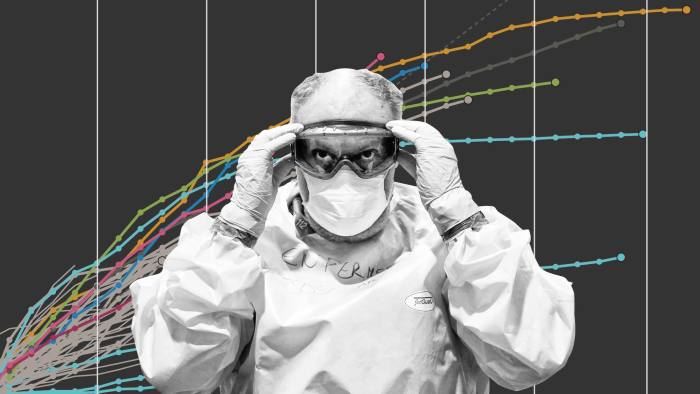China’s central bank has cut one of its most important lending rates to a record low as Beijing seeks cushion the hit to the economy from the coronavirus pandemic.
The move by the People’s Bank of China will inject RMB100bn ($14.2bn) into the country’s financial system and comes ahead of its release first-quarter gross domestic product figures on Friday. Analysts expect the data to reveal the country’s first official year-on-year decline in economic output since 1976.
The central bank cut the one-year medium-term lending rate to by 0.2 percentage points to 2.95 per cent — its lowest level since it was introduced in 2014.
The MLF rate is the benchmark against which the PBoC lends to commercial banks. The measure should reduce funding costs for Chinese banks and encourage them to lend at lower rates.
Editor’s note

The Financial Times is making key coronavirus coverage free to read to help everyone stay informed. Find the latest here.
China has in recent weeks restarted large parts of its economy after putting the country under lockdown in an attempt to contain the coronavirus outbreak. But analysts expect growth is likely to remain under pressure due to the rising probability of a global recession.
Economists polled by Reuters have forecast that China’s GDP shrank by 6.5 per cent year on year in the first quarter as a result of industrial lockdowns imposed across the country to contain the spread of Covid-19. Some big international banks — including UBS and Deutsche Bank — have predicted that GDP fell between 10 and 15 per cent between January and March.
“With external headwinds mounting and domestic demand struggling to fully recover from the Covid-19 outbreak even as most firms have resumed operations, the PBoC appears to be ramping up the pace of monetary easing,” said Julian Evans-Pritchard, senior China economist at Capital Economics. “But more will be needed to ensure the economy gets back on track.”
Economists said that moves by the US Federal Reserve to cut its own benchmark lending rate effectively to zero and other monetary support for the US economy had given Beijing breathing room to follow suit.
“The Fed has done so much [in terms of stimulus], that’s actually opened more room for the PBoC to cut interest rates,” said Michelle Lam, Greater China economist at Société Générale. Ms Lam said she expected the Chinese central bank to cut the MLF by another 0.4 percentage points in the second quarter.
Unlike the Fed and other central banks, Beijing did not unleash big-bang stimulus during the height of its coronavirus epidemic. Ms Lam said the cut to the MLF signalled that policymakers believed enough of China’s economy had now come back online, which could make measures more effective.
State media have reported in recent days that more economic support measures could be incoming.
“We have a huge domestic market,” noted an article in the People’s Daily, the Chinese Communist party’s official newspaper, on Monday. “If we focus on expanding domestic demand and stimulate internal drivers, we can certainly overcome the impact of the epidemic.”
Source: Economy - ft.com



